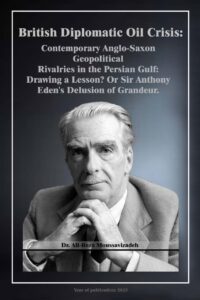The British Imperial Establishment, Post Imperial Era, and the ‘Churchillian’ World View, 1945-2016. (Adjustments & Challenges in Contemporary British Diplomatic Strategy)
47
The idea
of imperial preference received official recognition in 1932 at a
meeting in Ottawa, Canada. However, this
had been adopted by individual
colonies somewhat earlier. For example, Canada, wishing to offer a safe base
for
her rising industries brought in protective tariffs, but after 1897 aranged a
preferential tariff so
that British and other colonial products could gain access at
a cheaper rate than foreign goods. This
approach spread to other colonies. Finally
Britain caved in and after 1932 arranged bilateral trading
agreements with
individual empire countries, wherein reciprocal tariff preference was given. The
purpose
was to boost intra-imperial trade-in food, raw material and manufactured
goods at the expense of foreign
competitors. But the idea of the empire becoming
an exclusive trading block was never contemplated; this was
impossible. All the
countries, Britain and increasingly the colonies, needed foreign trade. But
the
trend was to strengthen, at least temporarily, some of the closer trading links
between Britain and
the various empire members that had been developing since
the turn of the century. 1932 confirmed the trend
officially, from the British point
of view.
Some
tightening of economic links between Britain and empire countries
due to the rise of foreign competitors was
not surprising at all. “Indeed, the closer
relationship arose more on Britain’s part, as she
obtained fewer of her imports
from foreign countries and sold more of her exports to the
empire.”22 Individual
empire countries for their part were still
very pleased to have a ready market for
their products in Britain but a number of the dominions were looking
for new
market opportunities, as well as obtaining an increasing amount of manufactured
products from
countries other than Britain. The weaker colonies of course
generally remained heavily dependent upon
Britain. “As to Britain’s imports the
first four decades of the twentieth century showed a marked
swing to the empire,
after the relative stability of the nineteenth century. Foreign suppliers (led by
the
United States) still remained stronger, but were declining.”23 Apart
from iron,
Pages: 1 2 3 4 5 6 7 8 9 10 11 12 13 14 15 16 17 18 19 20 21 22 23 24 25 26 27 28 29 30 31 32 33 34 35 36 37 38 39 40 41 42 43 44 45 46 47 48 49 50 51 52 53 54 55 56 57 58 59 60 61 62 63 64 65 66 67 68 69 70 71 72 73 74 75 76 77 78 79 80 81 82 83 84 85 86 87 88 89 90 91 92 93 94 95 96 97 98 99 100 101 102 103 104 105 106 107 108 109 110 111 112 113 114 115 116 117 118 119 120 121 122 123 124 125 126 127 128 129 130 131 132 133 134 135 136 137 138 139 140 141 142 143 144 145 146 147 148 149 150 151 152 153 154 155 156 157 158 159 160 161 162 163 164 165 166 167 168 169 170 171 172 173 174 175 176 177 178 179 180 181 182 183 184 185 186 187 188 189 190 191 192 193 194 195 196 197 198 199 200 201 202 203 204 205 206 207 208 209 210 211 212 213

